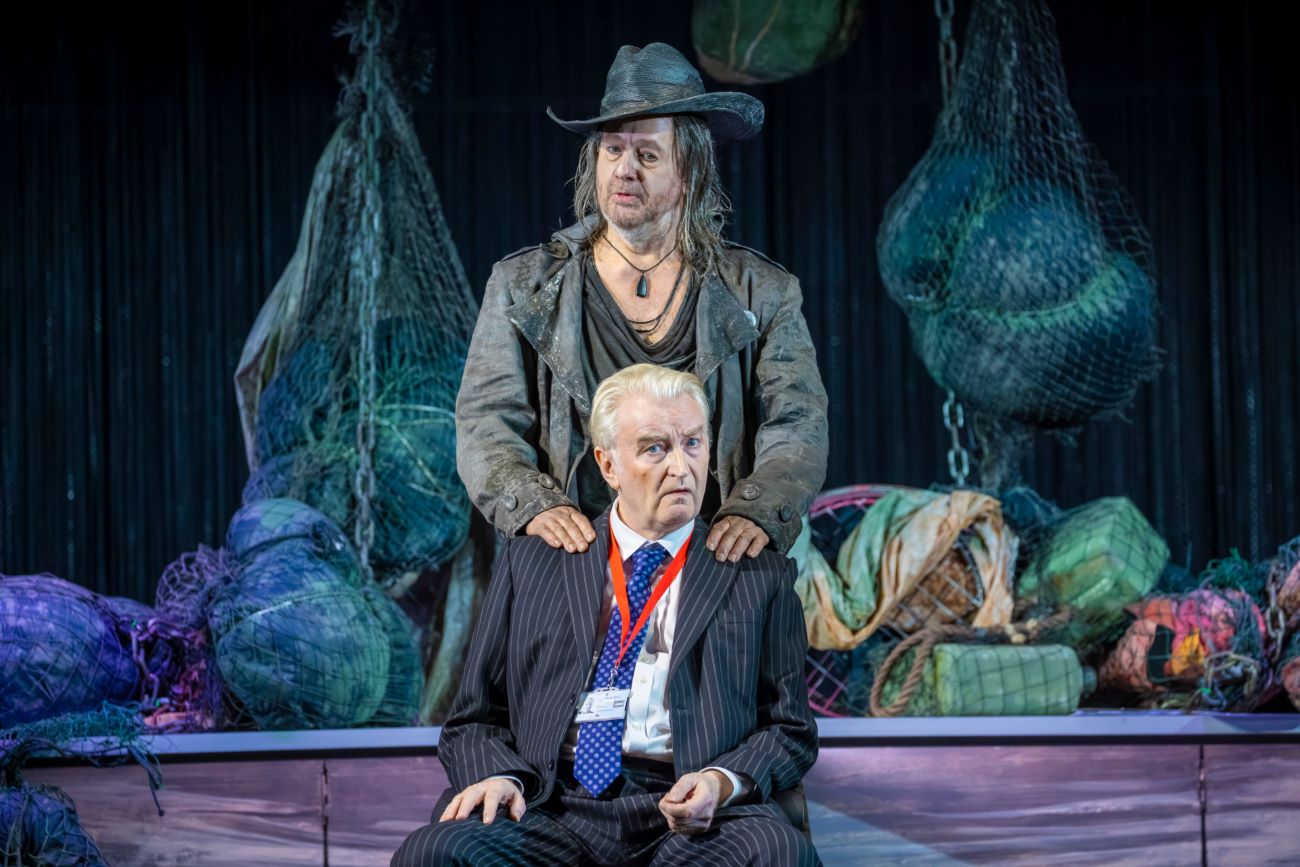Opera North has built a formidable reputation for creating original and provocative interpretations of opera classics, and their new take on The Flying Dutchman, directed by Annabel Arden, certainly upholds that tradition. Before delving into the risks it took—and why, for me, they were so successful—I want to first pay tribute to the exceptional work of the Opera North chorus and orchestra. I have rarely heard such a powerful and convincing performance in any opera, reminding me just how vital it is for an opera company to value its core team. The opening scenes of the third act were spine-chillingly wonderful, and while there was much to admire throughout this production, the chorus and orchestra truly deserve special praise.
The opera begins with Daland’s ship taking shelter in a bay before making its final journey to his home port. There, Daland meets another ship and befriends its captain, who boasts of the wealth he has accumulated during his voyages. The greedy Daland strikes a deal with the stranger, promising to arrange the marriage of his daughter to the newcomer. Unbeknownst to him, the stranger is the fabled Flying Dutchman, cursed to sail the seas for eternity. He can only find redemption if a woman proves her eternal faithfulness to him. Senta, Daland’s daughter, knows of the legend and dreams of being the one to free the Dutchman from his torment. She meets the stranger, and they strike a fateful bargain.
The principals in this performance are uniformly excellent. On press night, Layla Clare, who was ill, could only walk the part of Senta, with Mari Wyn Williams, a Welsh soprano, stepping in to sing from the side of the stage. I’ve admired Williams since a performance I saw in 2016, and despite the challenges of singing from outside the action, she was truly impressive, with a voice that soared above the Wagnerian complexities. Her performance was a significant strength in the production. Layla Clare, despite her illness, acted the role of Senta with feline grace, leaving me wishing I could experience the opera again with her singing the part. Robert Hayward was a compelling Dutchman, his sinister presence enhanced by his powerful bass-baritone voice, which conveyed the despair that drives him back to the sea after each failed encounter. Clive Bayley was a redoubtable Daland, presenting more of a comical than roguish figure, which provided a welcome foil to the gloomier elements of the production. As Erik and the Steersman, Edgaras Montvidas shone in both tenor roles, with his rendition of the Steersman’s song in Act 1 being particularly brilliant. Gary Walker coaxed the best from the Opera North Orchestra, with the brass section being a particular standout.
Annabel Arden’s version of the story frames the Dutchman’s plight as akin to that of refugees stranded on ships, eternally searching for a safe haven. This is a compelling idea, and much of the staging—particularly the deeply moving ending—works very well. However, not every element fits seamlessly with the story’s trajectory; I found the “ship of state” metaphor somewhat labored. Nonetheless, the visual impact of the performance was stunning, and I must compliment the creative team, particularly set designer Joanna Parker and lighting designer Kevin Treacy, for their contributions.
Musically, this Dutchman is superb, with a cast of singers, both principals and chorus, on par with those from more renowned opera houses. Dramatically, it’s intriguing and thought-provoking. While not everyone may find it as compelling as I did, it undoubtedly deserves thoughtful consideration. This is a monumental and admirable achievement for Opera North.
Director: Annabel Arden
Conductor: Gary Walker
Performers incl: Clive Bayley, Robert Hayward, Layla Clare/Mari Wyn Williams, Edgaras Montvidas
Running time: 2 hours 45 minutes
Dates: Until 28 March (various venues)
Photographs: James Glossop

